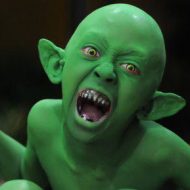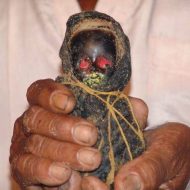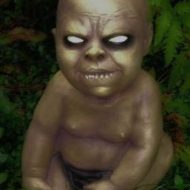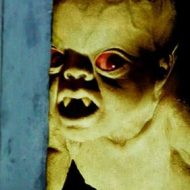Toyol : The Demon Baby
Listen
At a glance
| Description | |
|---|---|
| Origin | Malaysian Mythology |
| Classification | Spirits |
| Family Members | N/A |
| Region | Malaysia |
| Associated With | Black Magic, Stealing, Gambling, Murder |
Toyol
Introduction
A toyol or tuyul is an undead infant that appears in folklore in Southeast Asian countries and especially in Malaysian mythology. It is considered a helper by local shamans who are also known as dukun or bomoh who practice black magic. The primary use of the demon is to steal from the rich like the Babi Ngepet from Indonesian mythology.
In villages, people keep these creatures for various reasons, such as to steal or sabotage. With special rituals, toyol can be made to be powerful and lethal. Usually, it is kept in a jar in a dark place until needed or buried. Once the use of the spirit does not exist is is either buried deep or disposed at sea. The curse of an improperly disposed toyol can stay with a family for generations.
Physical Traits
The toyol is often described as a toddler who is almost naked. In modern times, it has been given a similar appearance to that of a goblin with green skin and pointed ears.
Other Names
This spirit is known by different names in various cultures and traditions. The Malay word toyol is tuyul in Indonesian and Javanese. It is known as cohen kroh in Khmer, and kwee kia in Hokkien. In Thai mythology, the male version is called kumarn-thong. Philippine mythology also has a similar creature known as tiyanak.
Powers and Abilities
They can be used to do tasks for their owners which mainly include stealing, causing harm, helping in gambling, creating a nuisance or in some very rare cases, even murder. The toyol is very attached to the owner and gets stronger every year. The presence of another child in the house incites extreme jealousy in the demon who then tries to harm its owner and the child.
The jar is usually passed on from parents to children as a protector of the family. There are many rules that have to be kept in mind while taking care of a toyol which makes it a very difficult task. Although useful in many ways, they are not particularly smart and get distracted easily like small children. Some ways people use to save themselves from this spirit is to have lots of toys and marbles in their house. All valuable are also kept near a mirror as they are scared of their own reflection.
Modern Day Influence
Even today, many families in Malaysia and other parts of South East Asia have a jar with a toyol at home. They are now popular characters in many TV shows and cartoons. The Hollywood movie Gremlins was also loosely based on the rules to take care of this demon baby.
Related Images
Source
“Enriching Malaysian Cultural and Folklore through Mobile Game Learning Development: Wau & Toyol,” 2020-11-17.
“A Malaysian Folklore Game Design As A Tool Of Culture Preservation And Entertainment: Toyol,” 2018-11-01.
“The Villainous Pontianak? Examining Gender, Culture and Power in Malaysian Horror Films,” 2016.
“Cultural Diversity in Dramatherapy in the Malaysian Context,” 2009-10-01.
“Mythology of Asia and the Far East: myths and legends of China, Japan, Thailand, Malaysia and Indonesia,” 2006.
Frequently Asked Questions
What is toyol used for?
Toyol, a mischievous infant spirit in Southeast Asian folklore, serves diverse purposes depending on context. Most commonly, it’s employed for theft, aiding its keeper in acquiring wealth by pilfering valuables from others. Its playful nature also leads to mischievous acts, while some exploit its image as a disciplinary tool for children. Beyond individual benefits, the toyol can reinforce social hierarchies, serve as protection, fuel revenge, and even inspire artistic creations. Despite varying interpretations, it remains a significant element in Southeast Asian cultural tapestry.
How do you deal with toyol?
Taming the mischievous toyol requires a multifaceted approach, varying with cultural beliefs. Common methods include placing deterrents like needles or mirrors, offering toys for distraction, or relying on religious rituals. For more advanced cases, capturing and binding the spirit, returning it to its origin, or destroying its associated artifact may be necessary
What is tuyul in filipino?
The word “tuyul” is most commonly associated with Indonesian and Malay folklore. However, in Filipino culture, the equivalent term is “toyol”, pronounced with a “y” sound instead of a “u”. Both terms refer to the same mythical creature: a mischievous undead infant spirit used for various purposes, including theft, mischief, and protection.
What is the history of toyol?
The Toyol’s history is steeped in mystery, with possible roots in pre-Islamic Mecca and indigenous beliefs about souls. Deeply woven into Malay and Indonesian folklore, it evolved into a symbol of mischief and greed, often associated with black magic and shamanism. This mischievous spirit served diverse social and cultural functions, influencing everything from social hierarchies to children’s behavior. Today, the Toyol continues to captivate audiences through media and literature, maintaining its significance in contemporary life despite its uncertain origins and varied interpretations.









